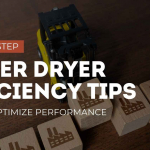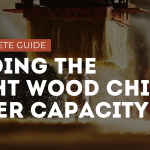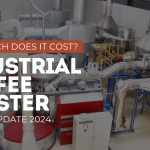Introduction: Beyond the Price Tag
When faced with a significant investment in coffee roasting equipment, the allure of budget-friendly options can be enticing. A $15,000 roaster certainly appears more attractive than a $40,000 model, especially when both promise similar capacity and basic functionality. However, this initial purchase price represents only a fraction of the true cost of ownership over the equipment’s lifetime.
For coffee producers looking to scale operations or improve quality, understanding the comprehensive costs of roasting equipment is essential to making informed decisions that support long-term profitability. The difference between high-quality and substandard equipment extends far beyond the invoice price—it impacts every aspect of your operation, from product consistency to staff satisfaction and, ultimately, your bottom line.
This analysis explores the often-overlooked costs of inferior coffee roasting equipment and provides a framework for calculating the true total cost of ownership, helping you make equipment decisions that serve your business well into the future.
The Real Price of “Budget” Equipment: Breaking Down Hidden Costs
Inconsistent Roast Profiles: Quality and Waste Implications
Quality coffee roasting demands precision and consistency. Inferior roasters typically struggle with temperature stability and airflow control, leading to inconsistent roast profiles even when operated by skilled roasters. This inconsistency manifests in two significant costs:
Product Quality Variability: When beans roast inconsistently, flavor profiles vary between batches. For specialty coffee producers, this variability can be devastating to building a reputation for quality. Even for commercial operations, inconsistency means dissatisfied customers and potential loss of accounts.
Increased Waste Production: Poor temperature control and inconsistent heat distribution result in more rejected batches and higher percentages of defective beans. Our analysis of operations using low-quality roasters shows an average waste rate of 12-18% compared to just 3-5% for operations using professional-grade equipment.
Cost Calculation Example: A roastery producing 1,000 pounds weekly on a budget roaster with a 15% waste rate loses approximately 150 pounds of coffee each week. At an average green coffee cost of $4.50/lb, this represents $675 in weekly waste, or about $35,100 annually—often exceeding the initial price difference between budget and quality equipment in just one year.
Energy Inefficiency: The Perpetual Cost Multiplier
Budget roasters frequently cut corners on insulation and heating element quality, resulting in significantly higher energy consumption per pound of roasted coffee.
Poor Heat Retention: Inadequate insulation and lower-quality construction materials result in heat loss during operation. This inefficiency forces heating elements to work harder, consuming more energy throughout each roasting cycle.
Inefficient Burner Design: Many budget models use outdated or poorly engineered burner systems that require more gas or electricity to achieve the same temperature as their higher-quality counterparts.
Cost Calculation Example: A mid-sized operation roasting 2,000 pounds weekly on an energy-efficient machine might use 0.45 kWh per pound, while a comparable budget model uses 0.75 kWh per pound. At an industrial electricity rate of $0.12/kWh, this difference represents an additional $312 in monthly utility costs, or $3,744 annually. Over a 10-year equipment lifespan, energy inefficiency alone adds $37,440 to the total cost of ownership.
Maintenance Frequency and Component Failures
Perhaps the most immediate and frustrating hidden cost comes from increased maintenance requirements and premature component failures.
More Frequent Service Intervals: Budget equipment typically requires more frequent adjustments, calibration, and general maintenance to maintain acceptable performance levels. While quality equipment might require comprehensive maintenance quarterly, budget alternatives often need monthly attention.
Early Component Failures: Lower-grade materials and components wear faster and fail more frequently. Common failure points include:
- Bearings and drive systems
- Heating elements
- Temperature probes and sensors
- Cooling system components
- Control boards and electronics
Labor and Parts Costs: Each maintenance event involves not just parts costs but labor hours—either from your staff or paid service technicians. Budget equipment often requires 2-3 times the annual maintenance hours of quality alternatives.
Cost Calculation Example: A quality roaster might require 16 hours of maintenance annually at a technician rate of $125/hour, plus approximately $800 in parts, totaling $2,800. A budget model could easily require 40 hours plus $2,200 in parts, totaling $7,200 annually—a $4,400 difference each year.
Production Downtime: The Revenue Killer
When equipment fails, production stops. This downtime represents one of the most significant hidden costs of inferior equipment.
Unplanned Downtime Frequency: Operations using budget equipment report an average of 5-12 days of unplanned downtime annually, compared to 1-3 days for operations with professional-grade equipment.
Revenue Impact: Each day of downtime represents lost production capacity and potentially unfulfilled orders.
Emergency Repair Premiums: Expedited parts shipping and emergency service calls typically command premium pricing—often 1.5-2x the standard rate.
Cost Calculation Example: For a roastery producing 400 pounds daily with a profit margin of $3.50 per pound, each day of downtime represents $1,400 in lost profit. With an average of 8 more downtime days annually than a quality-equipped competitor, this represents $11,200 in lost profit, not including emergency service premiums.
Shortened Equipment Lifespan: Replacement Acceleration
Quality coffee roasters from reputable manufacturers typically operate reliably for 15-20+ years with proper maintenance. Budget equipment, however, often requires replacement or major rebuilding within 5-8 years.
This compressed replacement cycle significantly impacts long-term capital expenditure planning and can force reinvestment long before expected in your business planning.
Cost Calculation Example: A $40,000 quality roaster with a 20-year lifespan has an annualized cost of $2,000 (excluding maintenance and operation). A $20,000 budget roaster lasting 7 years has an annualized cost of $2,857—43% higher despite the lower initial purchase price.
Limited Parts Availability and Proprietary Components
Many budget equipment manufacturers create intentional barriers to third-party maintenance and repair through proprietary components, limited parts availability, and restricted service documentation.
Supply Chain Vulnerability: When the manufacturer is the sole source for replacement parts, you’re vulnerable to:
- Extended lead times for parts delivery
- Price increases without competitive alternatives
- Complete parts unavailability if the manufacturer discontinues support
Service Provider Limitations: Proprietary designs often mean only manufacturer-certified technicians can perform repairs, limiting your options and potentially increasing service costs.
Cost Calculation Example: Standard heating element replacement on a mainstream commercial roaster might cost $600-800 with multiple supplier options. The equivalent proprietary component for a budget model could cost $1,200-1,500 with only one source, representing nearly double the expense each time the component needs replacement.
Training and Staff Frustration Costs
Equipment that’s difficult to operate consistently or prone to failures takes a toll on staff satisfaction and productivity.
Extended Training Requirements: Staff require more time to master inconsistent equipment, extending training periods and reducing productivity.
Higher Staff Turnover: Skilled roasters often leave operations with substandard equipment, seeking positions where their skills won’t be undermined by equipment limitations.
Productivity Impact: Staff spend more time troubleshooting and compensating for equipment limitations rather than focusing on quality improvements and production efficiency.
Cost Calculation Example: The cost to hire and train a new roaster can range from $5,000-8,000 when accounting for recruitment, onboarding, and reduced productivity during the learning curve. If equipment frustration contributes to even one additional staff departure every two years, this represents an annualized cost of $2,500-4,000.
Opportunity Costs: Limited Production Capabilities
Budget equipment often lacks the flexibility and precision needed to expand your product offerings or improve quality to access premium markets.
Market Access Limitations: Without precise control over roast profiles, you may be unable to properly develop the complex flavor characteristics demanded by specialty coffee buyers, limiting your market access.
Product Diversity Constraints: Limited control capabilities can restrict your ability to offer diverse product lines with distinct, consistent profiles.
Scaling Barriers: Inadequate equipment creates a quality ceiling that prevents business growth into higher-value market segments.
Cost Calculation Example: Specialty coffee commands a price premium of approximately 30-50% over standard commercial coffee. For a roastery producing 2,000 pounds weekly, the inability to consistently access this market due to equipment limitations represents a potential revenue difference of $156,000-260,000 annually.
Customer Satisfaction and Brand Reputation
Perhaps the most significant long-term cost comes from the impact on customer satisfaction and brand reputation.
Consistency Expectations: Coffee buyers at all levels expect consistency. Batch variability erodes trust and damages relationships.
Quality Ceiling: Inferior equipment places a cap on the quality you can achieve, regardless of the excellence of your green coffee or roaster skill.
Word-of-Mouth Impact: In the tightly connected coffee industry, reputation travels quickly. Equipment limitations that affect product quality can damage your brand well beyond your immediate customer base.
While difficult to quantify precisely, the brand reputation impact often exceeds all other hidden costs combined in its long-term financial impact.
Calculating True Total Cost of Ownership (TCO)
To accurately compare equipment options, use this framework to calculate the comprehensive 10-year Total Cost of Ownership:
- Initial Purchase Cost (including shipping, installation, and initial training)
- Annual Energy Costs (kWh per pound × annual production × electricity rate)
- Annual Maintenance Costs (parts + labor hours × service rate)
- Annual Downtime Costs (average downtime days × daily production value)
- Waste Costs (annual production × waste percentage × average bean cost)
- Replacement/Rebuild Probability (replacement cost × probability factor based on expected lifespan)
- Staff Turnover Cost (hiring and training costs × expected turnover differential)
- Market Access Value (potential premium market value − current market value)
This calculation frequently reveals that equipment with double or even triple the initial purchase price can actually have a lower 10-year TCO than budget alternatives.
Quality Indicators: What to Look For When Evaluating Equipment
When evaluating coffee roasting equipment, focus on these key quality indicators:
Material Quality and Construction
- Drum Construction: Thickness and material grade of the drum (high-grade stainless steel preferred)
- Insulation Quality: Type and thickness of insulation materials used
- Frame Construction: Structural solidity and welding quality
- Bearing Quality: Size and grade of main drum bearings
Control Systems
- Temperature Probe Quantity and Placement: Multiple temperature monitoring points provide better roast control
- Control Interface Sophistication: Look for digital controls with data logging capabilities
- Airflow Control Precision: Variable and measurable airflow adjustment
- Heat Source Control: Look for precise, responsive burner or element control
Manufacturer Reputation and Support
- Years in Business: Manufacturers with longer histories tend to provide better long-term support
- Spare Parts Availability: Multiple sources for common wear components
- Service Network: Availability of trained service technicians
- User Community: Active user communities indicate successful equipment with good support
Energy Efficiency Certifications
- Look for equipment with recognized energy efficiency certifications specific to your region
Scaling Business Considerations: Critical Decision Points
Businesses in growth phases face particular risks when making equipment decisions:
Production Capacity Planning
Quality equipment often allows for higher actual throughput despite identical rated capacities due to:
- Faster heat recovery between batches
- More efficient cooling cycles
- Higher reliability with fewer interruptions
Market Positioning Alignment
Your equipment capabilities must align with your intended market position:
- Economy coffee production can tolerate some consistency variation
- Specialty market access requires precision and repeatability
- Premium positioning demands both consistency and the ability to develop complex flavor profiles
Growth Flexibility
Consider how equipment choices support or limit future business directions:
- Ability to roast diverse bean varieties and origins
- Capability to develop multiple distinct product lines
- Capacity to meet increased demand without quality compromises
Return on Investment: Quality Equipment Case Studies
Case Study 1: Small Specialty Roaster
A specialty coffee roaster invested in a $35,000 drum roaster rather than a $18,000 alternative. The additional $17,000 investment was recovered in just 16 months through:
- 8% lower waste rate (saving $14,400 annually)
- 40% reduction in maintenance costs (saving $3,800 annually)
- Energy efficiency savings of $2,200 annually
- Over the 15-year equipment lifespan, the higher-quality equipment provided approximately $306,000 in operational savings versus the budget alternative.
Case Study 2: Mid-Sized Commercial Operation
A regional coffee producer upgrading from 30kg to 60kg batch capacity compared a $75,000 European-manufactured roaster against a $45,000 alternative. Despite the $30,000 price difference:
- The quality option provided 14% higher effective hourly throughput due to faster cycles
- Maintenance costs ran 65% lower over the first five years
- Consistently higher product quality allowed a price increase of $0.75/lb across all products
- The calculated ROI showed the premium equipment paid for its price difference in 2.3 years
Equipment Quality and Output Consistency
The relationship between equipment quality and output consistency can be understood through these key factors:
Thermal Stability
Higher-quality roasters maintain more consistent temperatures throughout the roasting process due to:
- Superior insulation materials
- More substantial thermal mass
- Better-engineered heating systems
- More sophisticated temperature control algorithms
This stability translates directly to batch-to-batch consistency and the ability to reproduce successful roast profiles reliably.
Airflow Control Precision
Quality roasters provide precise, measurable control over airflow during roasting, which:
- Influences development time and flavor characteristics
- Affects moisture removal rates
- Impacts bean surface temperature versus internal temperature differentials
- Contributes significantly to roast repeatability
Drum Speed and Motion Quality
The mechanical aspects of drum movement affect how beans tumble during roasting:
- Consistent drum speed without fluctuation
- Properly designed drum flights for even bean movement
- Balanced rotation free from vibration or irregular motion
- These factors influence heat transfer uniformity throughout the bean mass
Evaluating Durability and Build Quality
Look beyond marketing claims with these practical evaluation methods:
Physical Inspection Points
- Weld Quality: Examine all visible welds for consistency and finish
- Panel Fit: Gaps, misalignments, or loose panels indicate poor manufacturing standards
- Material Thickness: Check the gauge of metal used in key components
- Bearing Mounts: Look for substantial mounting points for critical bearings
- Insulation Completeness: Check for comprehensive insulation coverage without gaps
Operational Assessment
- Sound Profile: Excessive or irregular noise during operation indicates potential issues
- Temperature Recovery: Measure recovery time after loading beans
- Control Responsiveness: Evaluate how quickly the system responds to control inputs
- Cooling Efficiency: Time how quickly the cooling tray reduces bean temperature
Manufacturer Transparency
Quality manufacturers typically offer:
- Detailed specifications including material grades and thicknesses
- Factory tours (in person or virtual)
- Access to current users as references
- Comprehensive documentation on maintenance requirements
- Clear warranty terms without excessive exclusions
Conclusion: Making Informed Equipment Decisions
The true cost of coffee roasting equipment extends far beyond the initial purchase price. While the temptation to save on upfront costs is understandable, the data consistently shows that quality equipment provides a significantly lower total cost of ownership over its operational lifetime.
For operations seeking long-term success, equipment decisions should be based on comprehensive cost analysis rather than initial price alone. The framework provided in this article can help you evaluate options based on their true lifetime value to your business.
Our consulting team specializes in helping coffee producers evaluate equipment options based on their specific operational needs, growth plans, and financial parameters. We conduct comprehensive site assessments, develop customized equipment specifications, and can represent your interests throughout the selection and procurement process.
By taking a data-driven approach to equipment decisions, you can avoid the expensive consequences of false economy and build a production foundation that supports your quality goals, operational efficiency, and long-term profitability.
Contact our team today for a consultation on your roasting equipment needs and discover how our expertise can help you make decisions that pay dividends for years to come.




